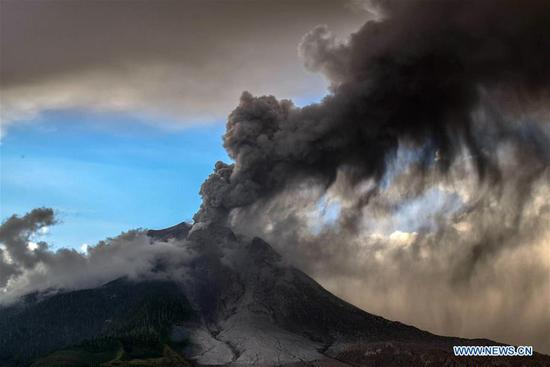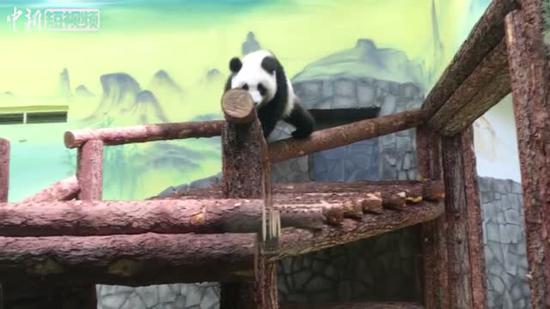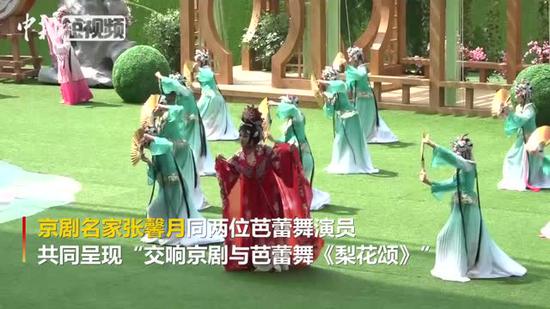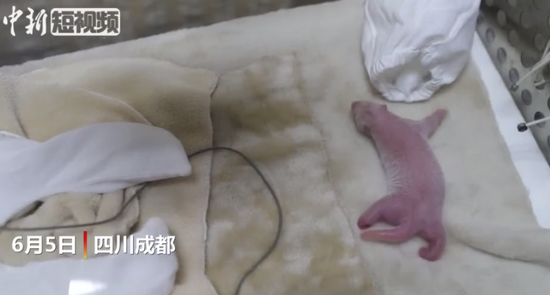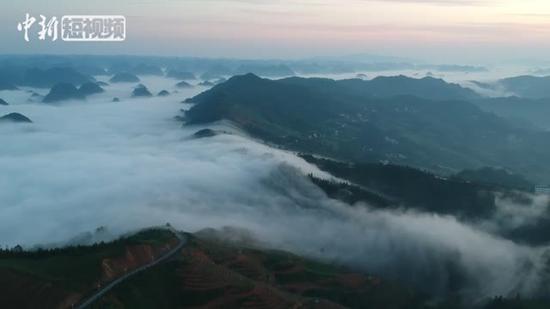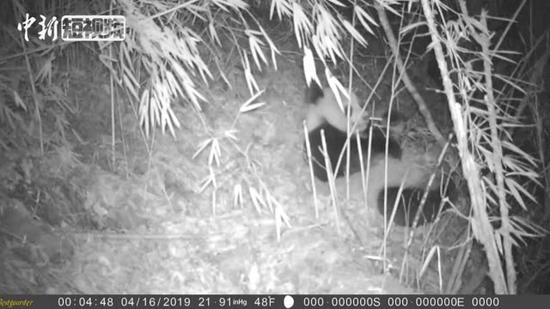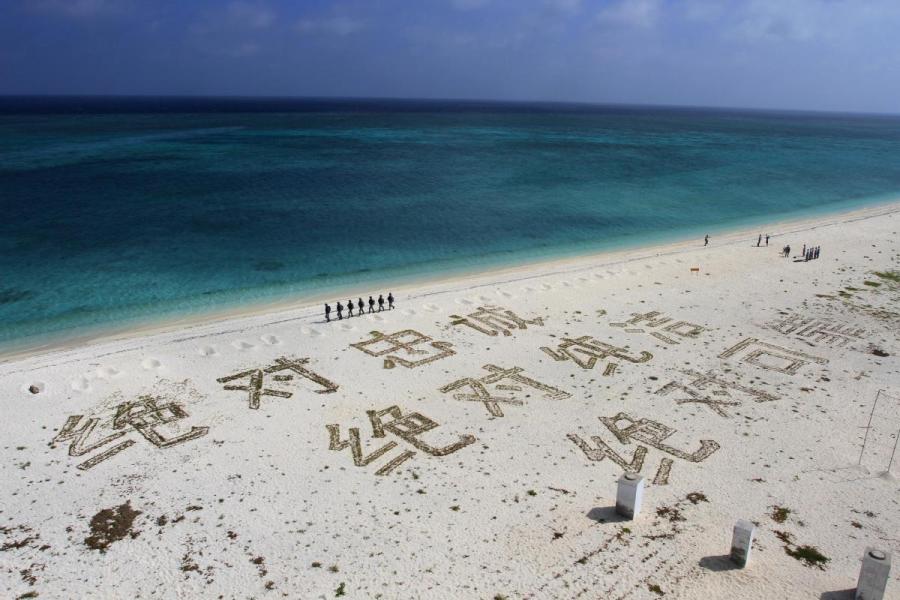
Trees planted on Zhongjian Island in the Xisha Islands spell out a message of loyalty in Chinese characters. (CAI SHENGQIU/FOR CHINA DAILY)
Members of a garrison on a small island in the South China Sea are determined to conquer nature and make the reef their home.
Every member of the People's Liberation Army Navy deployed on Zhongjian Island in the Xisha Islands in the South China Sea is asked to plant a tree on the day they arrive.
The trees symbolize the new recruits taking root on the motherland, which they will safeguard unswervingly while contributing to the development of the island, which lies off the coast of Hainan Province.
Planting a tree is no big deal, but making sure it flourishes can be quite a headache for the sailors of the Zhongjian garrison because the process requires more than just daily watering.
When combined with the coral reef on which it is situated, Zhongjian Island covers 1.2 square kilometers, but the sailors said the area of land above sea level is no larger than two soccer pitches.
Formed from coral sand and shell debris, the island is basically an entire white sandy beach that is so frequently battered by cyclones and waves that the local fishermen refer to it as "The Island of Winds" or "Xisha's Gobi Desert".
It is in this environment that the sailors of the garrison have embarked on afforestation efforts to make the island more habitable. They have been doing so ever since the first batch of seven sailors from the South China Sea Fleet settled on the island.
Qiu Hua, leader of the garrison's communication squad, has spent the most time in the Xisha Islands. After a period on Shanhu Island, he arrived at Zhongjian in 2006, and his first sight of the island still haunts him.
"My heart sank when the ship entered the port. There were so few people and the land was desolate and white. I thought 'Oh my! How come this place is like this?'" he recalled.
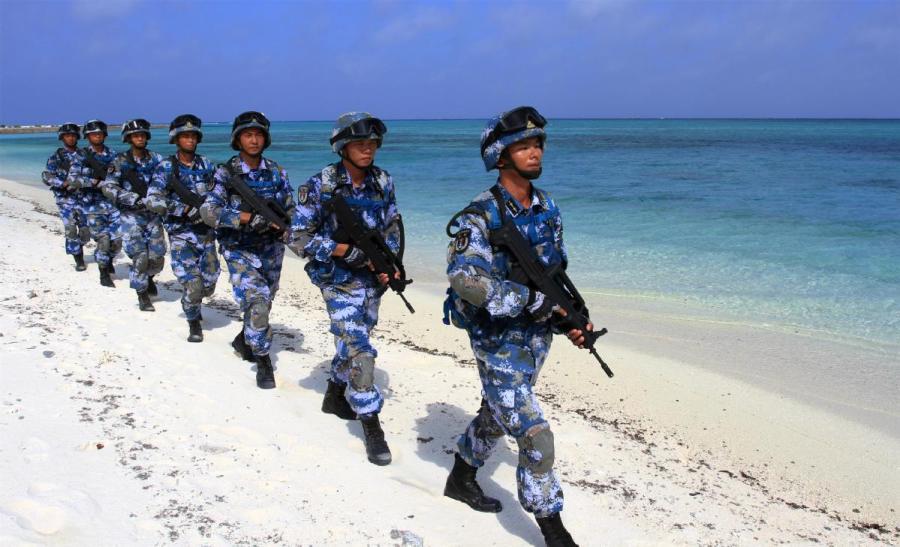
Sailors stationed on Zhongjian Island attend morning drill. (CAI SHENGQIU/FOR CHINA DAILY)
Natural dangers
He quickly understood. In September 2006, Typhoon Xangsane plowed across Southeast Asia, causing large waves that washed over the beach time and again.
"All the trees we had planted on the beach were swallowed by the seawater. All gone. All our efforts were in vain," Qiu said.
Looking at the island now, his words are hard to comprehend: The road from the dock to the garrison is lined with coconut trees, pine woods surround the perimeter wall and the white, sandy beach is covered with sea purslane that stretches in all directions. The camp even has a vegetable plot where green peppers, pak choi, chives and water spinach are grown.
Coconut trees are among the most successful plants on the island. The first to produce new buds was planted in 1982 and still bears fruit today. However, not all the saplings have been so lucky.
Located in a tropical cyclone zone, the Xisha Islands are hit by more than 20 typhoons a year, with at least two or three passing straight across Zhongjian, according to radar technician Zhang Xiaowei, who arrived in 2006.
Every time a typhoon was forecast, the sailors set up steel pipes around the trees and tied them together to fortify the trunks. Then they climbed to the tops of the trees and cut off many of the branches so the canopy would withstand the force of the wind. However, the aftermath was still heartbreaking every time as large numbers of trees were uprooted and broken branches were scattered across the ground.
To revive the dying trees, the sailors immediately trimmed the broken branches and replaced soil at the roots that had been hollowed out by the gale and seawater. Though the trees continued to grow, the section of trunk split by the typhoon would be narrower than the other parts.
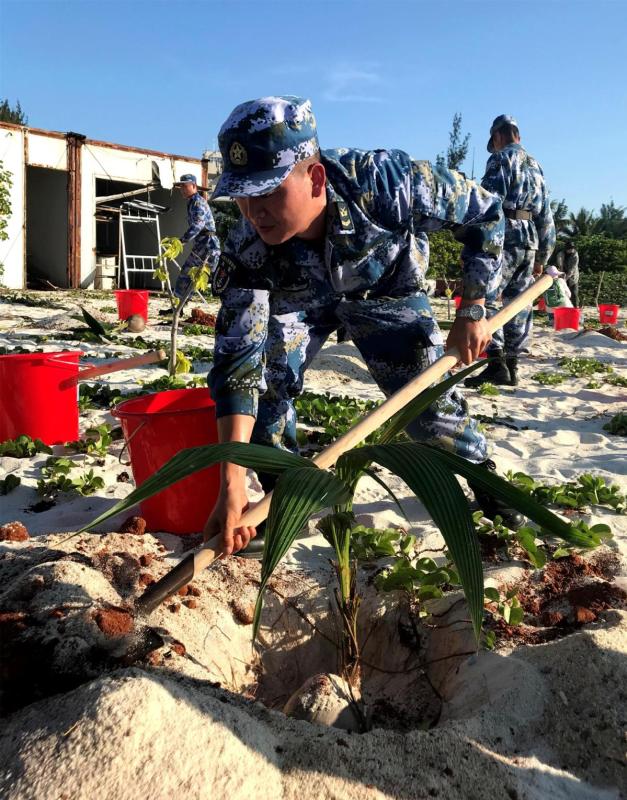
A sailor plants a coconut sapling. (CAI SHENGQIU/FOR CHINA DAILY)
Zhang remembers the night Typhoon Ketsana hit in 2009. The tides and winds destroyed the camp's walls and smashed the windows of the room in which he and his comrades were sleeping.
They awoke to find themselves floating in the water, and a sailor named Zhao Jianyun sustained a 10-centimeter gash to his stomach when he was hit by a shard of glass.
The electricity was cut off, and the sailors were unable to open the door because the wind was too strong. Working in the dark, they eventually managed to open the door by pulling on a thick rope around the handle, and then tied large rocks to themselves and crawled to the medical center.
"The distance was only about 20 meters but it took us half an hour," Zhang said, recalling that without electricity, the doctor operated on Zhao under a flashlight.
Qiu remembers that the seawater was 60 to 80 cm deep in the dining hall into which the sailors were evacuated. The water kept pouring in, and as the sailors were bailing it out, they saw pigs and sheep they had raised float by, carried into the sea.
Zhang said, "The first things we do after every typhoon are check our equipment to ensure that our duty posts are safe and then tend to our trees."
Li Wanglong, the former head of the machine gun squad, who arrived on the island in 2008, said: "Every time a typhoon kills the trees, we start replanting. I have planted thousands of trees on the island, and we consider a survival rate of 10 percent to be good."

Garrison members undertake physical training. (CAI SHENGQIU/FOR CHINA DAILY)
Water shortage
A shortage of fresh water has also hindered the trees' growth. In 2008, desalination facilities were installed at the camp, but before then the water for both the trees and daily use came from a well.
"That water was no different from seawater," Qiu recalled, adding that on other islands, plants and deep sand filter some of the salt from the seawater, but on Zhongjian, where trees are scarce and the land is less than 2 meters above sea level, the water is barely filtered. Many sailors have contracted skin diseases after wearing clothes washed in the brackish water.
A decade or so ago, the only fresh water came from a twice-yearly shipment that was stored in two tanks that each held 150 metric tons of the liquid.
Zhang said that every morning after training, the sailors would line up in front of the tank and their captain would scoop a set amount of water into their basins so they could wash and brush their teeth.
The used water was supposed to be poured onto the vegetable plot, but some sailors secretly poured it on to the tree they had planted the day they arrived because it had a special significance for them.
"They place their hopes on the tree. Going to check their own tree every day and seeing it grow is a memory for them on the island," Zhang said.
Guo Danyang, leader of the radar squad, said, "These harsh natural conditions mean far more trees have been planted than have actually survived." Guo is Zhongjian's longest-serving inhabitant, having arrived in 2003.
"The survival rate of coconut trees is very low, and they take a long time to bear fruit. A normal coconut tree in Hainan Province probably needs only half a year to produce a coconut, but here in Zhongjian, it takes at least 12 to 13 years. Some of those planted when I came to the island have yet to yield a single coconut," he said.
"In the early years we could see the coconuts, but were not allowed to taste them, because there were too few and there was no way to guarantee that everyone could have a mouthful."
Zhang remembers his first sip of fresh coconut water in 2012, when a few of the trees had started to yield fruit. One day, he received an order from the garrison captain to collect 22 coconuts over the following week, but the work had to be done in secret.
"You have to collect 22 coconuts, no matter what. They will be of great use to me," the captain told Zhang.
Zhang didn't understand what they would be used for, but he obeyed the order and placed the fruit in cold storage. On a Saturday evening after a physical training session, all 22 members of the garrison were relaxing, when the captain ordered Zhang to fetch the coconuts. He told the sailors, "Today we are going to complete a feat-everyone must drink a coconut."
Zhang said: "We each cut open a coconut and cheered. It was the first time I had tasted coconut since arriving. They were all grown by us. Even though they were small and tasted quite sour and rough, I still found the taste very sweet."
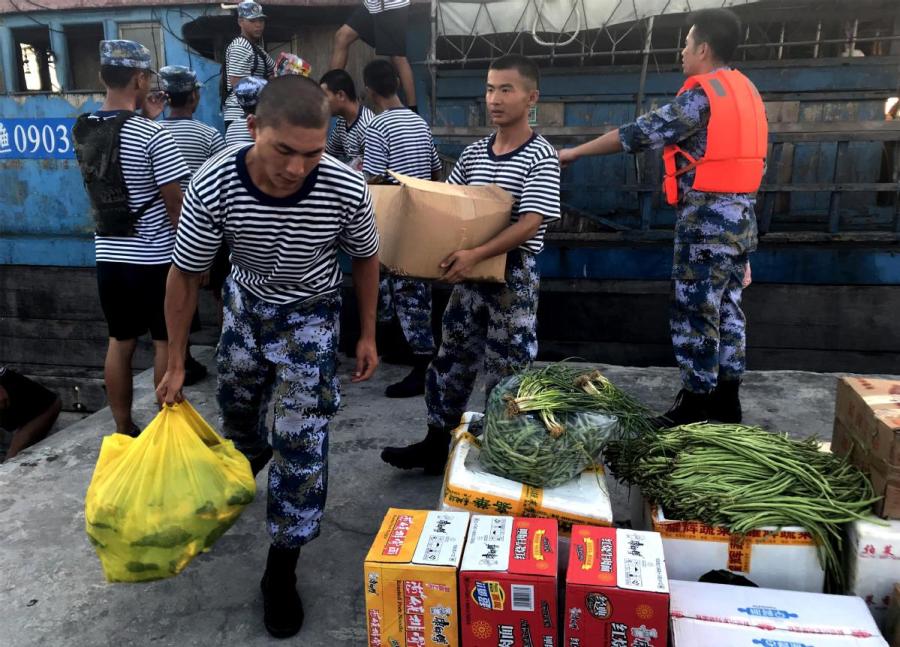
Mariners unload cargo from a supply ship. (ZHANG YANGFEI/CHINA DAILY)
New species
The garrison members have lost count of exactly how many trees they have planted on the island. They only know that they plant them every month, when a supply ship arrives with daily necessities and more seeds.
Although botanical research institutes have introduced more than 100 plant species that can adapt to the tropical climate, only two types have really thrived.
To make the sandy land more suitable for plants, every sailor and officer has brought bags of fertile soil from their hometown when returning from leave, and they constantly introduce new species from places they visit in the hope they will grow.
For example, horsetail pines were introduced from Zhanjiang, Guangdong Province, by one of the garrison's former commanders, while the sea purslane that covers the beach was brought from another island by Zhang and Wang Fengmin, his first drill instructor.
After countless failures, the sailors' efforts may appear fruitless, but they maintain their ambition to make Zhongjian Island their second home and safeguard national sovereignty.
As Qiu put it, "I'm not bragging, but Xisha is my home now, and my old home has become a land in the distance."












